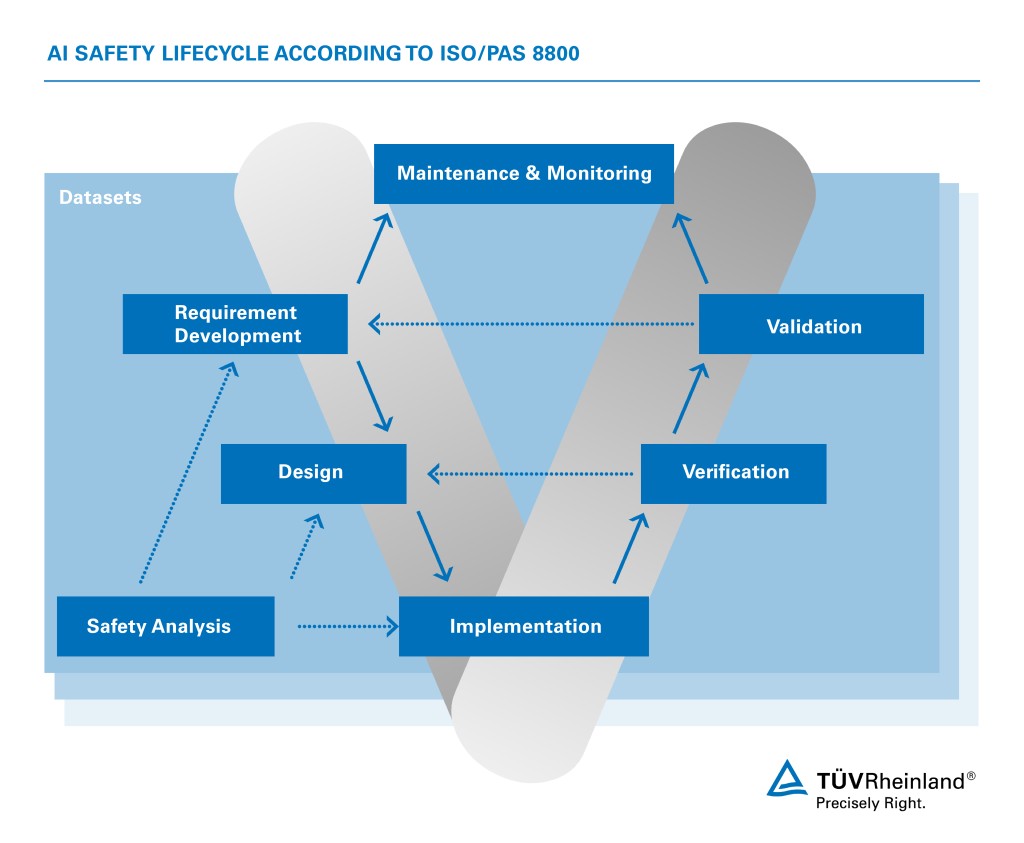ISO/PAS 8800: Training & Workshops, Audits and Assessments

ISO/PAS 8800: Our service for safe AI systems in vehicles.
You need to ensure that AI systems in vehicles are implemented safely and any potential risks are minimized? The "ISO/PAS 8800 – Road Vehicles – Safety and Artificial Intelligence" standard provides OEMs, suppliers, and development service providers with safety guidelines and requirements to reduce risks in AI-based vehicle systems.
However, the interpretation of the new standard is complex, the requirements are not always clearly defined and the practical implementation requires specialist knowledge and experience. Benefit from our expertise and participation on its development, to master the technical, organizational and regulatory challenges.
Our services at a glance:
The benefits of ISO/PAS 8800 for the automotive industry.
- Reduced liability risks thanks to compliance with a recognized safety standard.
- Fulfillment of regulatory requirements to ensure future compliance at an early stage.
- Building trust with customers and authorities through systematic risk reduction.
- Position yourself as a pioneer for safe AI technologies.
- Greater marketability through better compliance with OEM requirements.
- Standardized development processes with clear specifications for a safe AI design.
- Optimization of functional safety by adding existing standards such as ISO 26262.
- Better risk assessment and identification of sources of error starting as early as in the development phase.
- Strategic planning security for the integration of AI in safety-related vehicle systems.
- More efficient risk management due to structured processes and safety analyses.
- Optimized development time through standardized processes.
- Prevention of costs for rework thanks to early error detection.
How we support you with ISO/PAS 8800.
Modern vehicles are much more than just means of transportation: They are highly complex data centers on wheels that generate and process huge amounts of data. As a result, the use of safe AI is becoming increasingly important.
While the new ISO/PAS 8800 defines the fundamental framework conditions for safety, it deliberately leaves room for design specifics. This, however, makes interpretation and implementation much more difficult.
A structured approach along the entire development process is therefore even more important. ISO/PAS 8800 proposes an AI safety lifecycle that covers all relevant phases – from developing the requirements over design, verification and validation to maintenance and field monitoring. Consequently, the AI safety lifecycle creates a guiding framework that helps to identify risks at an early stage, to systematically evaluate data and to implement safety measures in a targeted manner.
TÜV Rheinland brings a huge industry knowledge and methodological expertise to this process – based on ISO/PAS 8800, but also on ISO 26262 and SOTIF. Our independent and impartial experts assess and certify your systems and products, while additional training ensures an efficient implementation. This is how we support you in the development of vehicle AI systems that are safe, standard-compliant, and economically viable.
Ask about our ISO/PAS 8800 services.
The interpretation of ISO/PAS 8800 requires expertise and experience. Contact us for a non-binding initial consultation. Let's work together to shape a safe and AI-based automotive future!
What you should know about ISO/PAS 8800.
This might also interest you:
Contact




